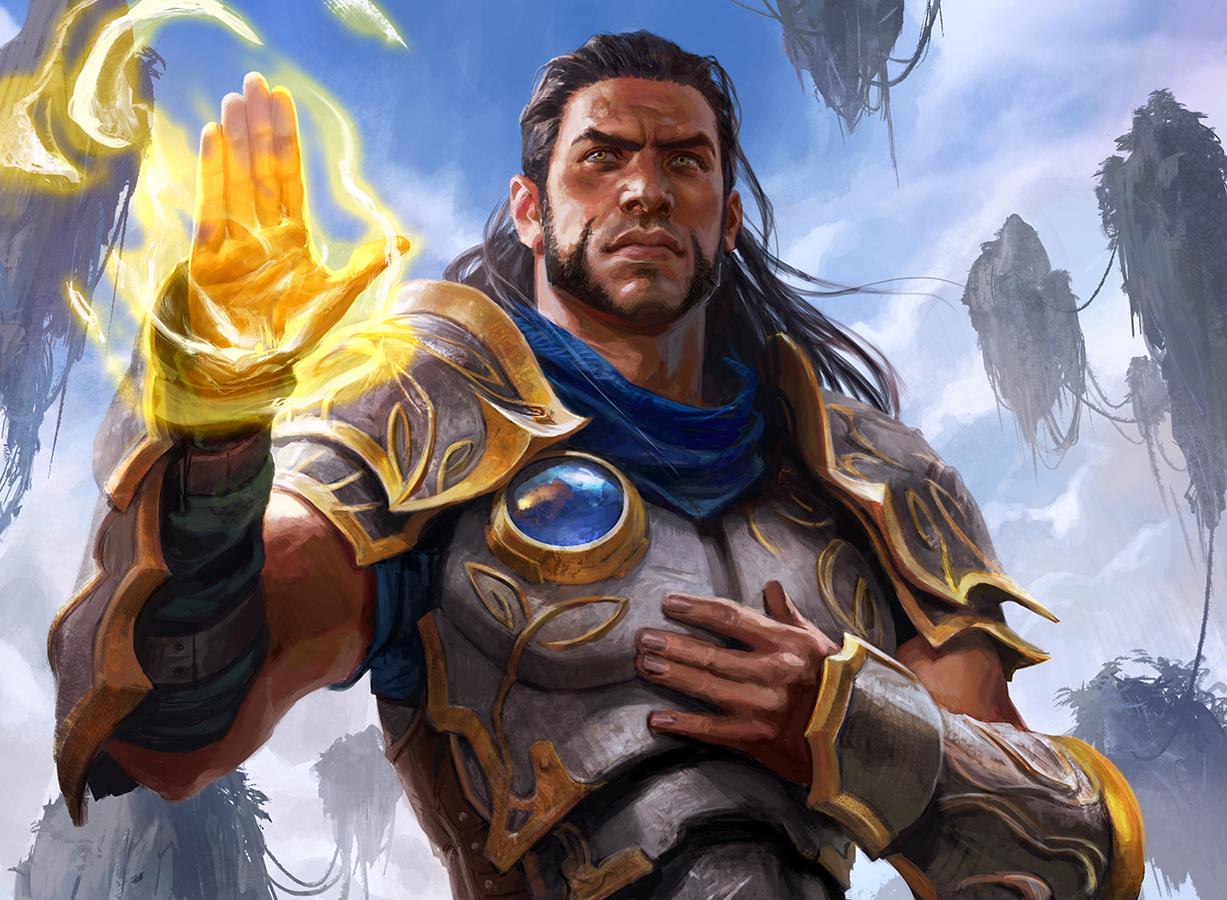
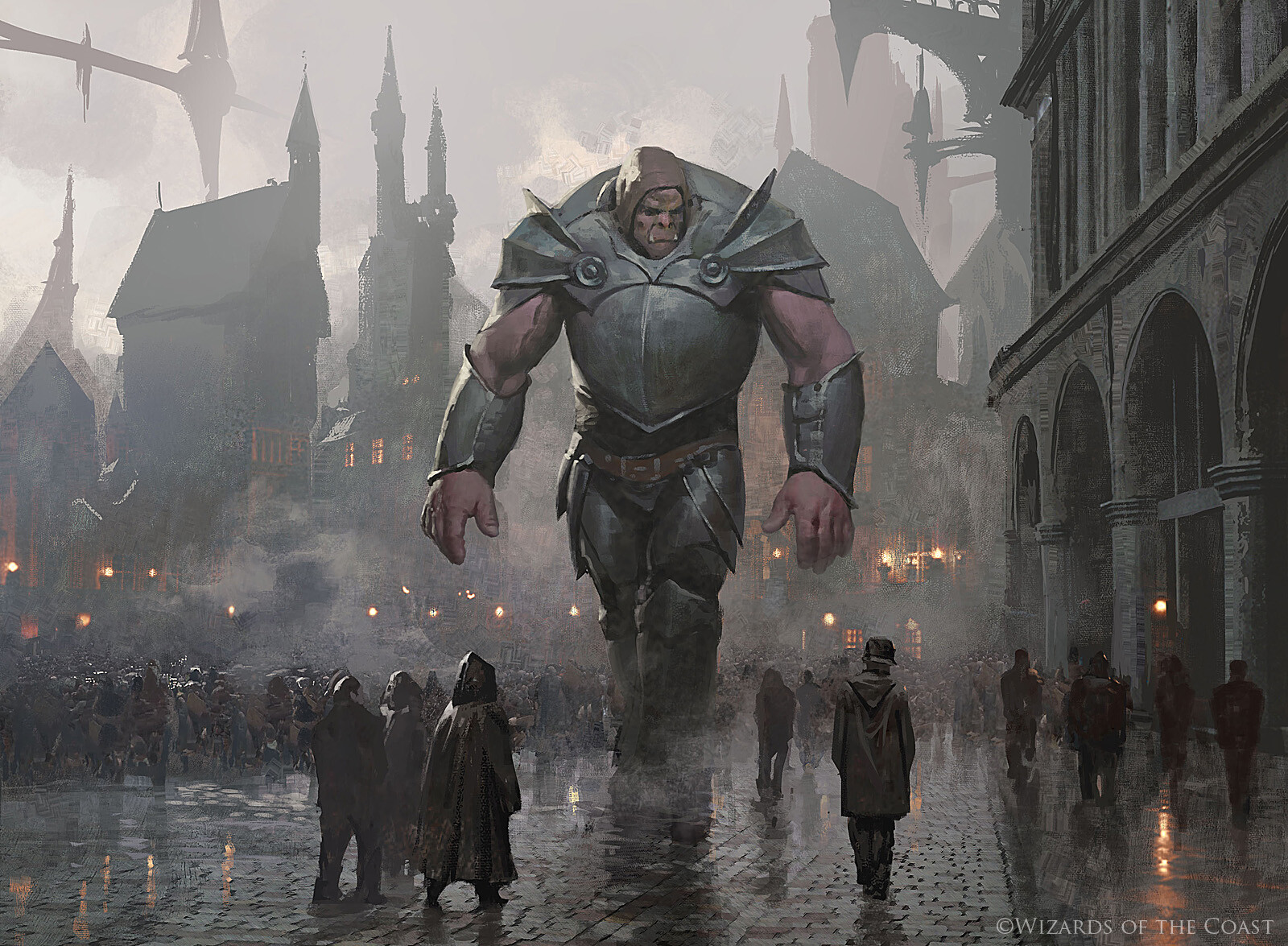






Warlord
A bellowing roar shakes the battlefield, as an axe-wielding leonin yells orders at its pride, rallying its subordinates into fight. Tonight, their tribe would eat plenty as they arrived, bathed in the blood of their enemies.
An elderly elf barks instructions at a young human, having her adjust her stance as she releases the string of her bow - resulting in a bullseye shot in between the eyes of a mighty ogre. He smiles, proud of his pupil’s growth.
A balding human with a missing eye nails their dagger on the table, sharing with its allies the plan of attack. If they wished to win this war, their next move had to be flawless.
A hulking figure sprints across the crossfire - a firbolg in plate armor, carrying three unconscious warriors over his shoulders, hoping to take them out of danger. Were it not for him tending to their wounds, they’d be dead by now.
These warlords, as different as they might be, are natural born leaders who stand on the battlefield side by side with their allies. Their skill lets them shift the tide of any battle - no matter how large or insignificant, no matter if it requires sword and shield or just a sharp tongue.
Born to Lead
Be it fear, love or respect, Warlords are known for one thing - their ability to lead their comrades like no one else. Be it tactical knowledge, sheer presence or even dirty fighting, they know the best moment to strike, and equally as much do they understand the value of retreating.
Brilliant Strategists
To a Warlord, every battle is like a riddle - and they are the ones with the wits to solve it. They take every advantage that is presented to them, attacking only when necessary, for “he who seizes the right moment is the right man”.
Multiclassing and the Warlord
If your group uses the optional rule on multiclassing, here's what you need to know if you choose Warlord as one of your classes.
Ability Score Minimum: As a multiclass character, you must have at least an Intelligence or Charisma score of 13 to take a level in this class, or to take a level in another class if you are already a Warlord.
Proficiencies Gained: If Warlord isn't your initial class, here are the proficiencies you gain when you take your first level as a Warlord: light armor, medium armor, shields, simple weapons, martial weapons.
Class features
As a warlord, you gain following class features.
Hit Points
- Hit Dice: 1d10 per warlord level
- Hit Points at 1st Level: 10 + your Constitution modifier
- Hit Points at Higher Levels: 1d10 (or 6) + your Constitution modifier per warlord level after 1st
Proficiencies
- Armor: All armor, shields
- Weapons: Simple weapons, martial weapons
- Tools: None
- Saving Throws: Strength, Constitution
- Skills: Choose two skills from Acrobatics, Athletics, History, Insight, Intimidation, Investigation, Persuasion
Equipment
You start with the following equipment, in addition to the equipment granted by your background:
- • (a) two martial weapons or (b) a martial weapon and a shield
- • (a) scale mail, (b) leather armor or (c) chain mail
- • (a) a light crossbow and 20 bolts or (b) five javelins
- • (a) a dungeoneer’s pack or (b) an explorer’s pack
Quick Build
First, make Strength or Dexterity your highest ability score, depending on whether you want to focus on melee weapons or on archery (or finesse weapons). Your next-highest score should be Charisma or Intelligence, depending on the warleader type you plan to adopt. Second, choose the noble background.
The Warlord
| Level | Proficiency Bonus | Features | Inspiring Words |
|---|---|---|---|
| 1st | +2 | Born Leader, Inspiring Word | 1 |
| 2nd | +2 | Fighting Style, Battlefield Presence | 1 |
| 3rd | +2 | Warleader Type | 1 |
| 4th | +2 | Ability Score Improvement, Versatile Leader (Optional) |
1 |
| 5th | +3 | Extra Attack | 2 |
| 6th | +3 | Leader's Presence | 2 |
| 7th | +3 | Warleader Type feature | 2 |
| 8th | +3 | Ability Score Improvement, Versatile Leader (Optional) |
2 |
| 9th | +4 | - | 3 |
| 10th | +4 | Warleader Type feature | 3 |
| 11th | +4 | Viper's Strike | 3 |
| 12th | +4 | Ability Score Improvement, Versatile Leader (Optional) |
3 |
| 13th | +5 | - | 4 |
| 14th | +5 | Undying Legion | 4 |
| 15th | +5 | Warleader Type feature | 4 |
| 16th | +5 | Ability Score Improvement, Versatile Leader (Optional) |
4 |
| 17th | +6 | - | 5 |
| 18th | +6 | Warleader Type feature | 5 |
| 19th | +6 | Ability Score Improvement, Versatile Leader (Optional) |
5 |
| 20th | +6 | Martial Paragon | 5 |


Born Leader
You have an innate talent for leading others and shaping the course of battle. Choose your Warlord ability:
Intelligence: Your exceptional intellect allows you to construct and enact complex battle plans on the fly, as well as motivate your allies with cold calculation. Your Warlord ability is Intelligence.
Charisma: You exude dominance that inspires allies and intimidates enemies. Your Warlord ability is Charisma.
Whenever a feature refers to your Warlord ability, use the ability you chose.
Inspiring Word
A word of encouragement is enough to strengthen the determination of your companions. As an action, you can shore up their resolve to fight. Choose an allied creature you can see within 30 feet of you. If the target can hear you, it gains a number of temporary hit points equal to your Warlord level + your Warlord modifier (minimum of 1).
You can use this feature a number of times shown in the Inspiring Words column of the Warlord table. You regain all spent uses when you finish a short or long rest.
Battlefield Presence
Starting at 2nd level, when an allied creature you can see within 30 feet of you, other than you, hits its target with a weapon attack, you can use your reaction to order it to push the advantage. If the target can hear you, it can make one weapon attack as a reaction.
Fighting Style
At 2nd level, you adopt a particular style of fighting as your specialty. Choose one of the following options. You can’t take a Fighting Style option more than once, even if you later get to choose again.
Archery
You gain a +2 bonus to attack rolls you make with ranged weapons.
Blind Fighting
You have blindsight with a range of 10 feet. Within that range, you can effectively see anything that isn't behind total cover, even if you're blinded or in darkness. Moreover, you can see an invisible creature within that range, unless the creature successfully hides from you.
Dueling
When you are wielding a melee weapon in one hand and no other weapons, you gain a +2 bonus to damage rolls with that weapon.
Inspiring, or tactical warlord?
As some Warlord subclasses tend to lean towards Charisma, and others lean towards Intelligence, it's best to treat Warleader Type in a similar fashion to Paladin's Sacred Oath - up to 3rd level you are in a preparatory stage, committed to the path but not yet on the path itself.
TL;DR - Warleader Type should be taken into consideration during the character creation.
Defense
While you are wearing armor, you gain a +1 bonus to AC.
Great Weapon Fighting
When you roll a 1 or 2 on a damage die for an attack you make with a melee weapon that you are wielding with two hands, you can reroll the die and must use the new roll, even if the new roll is a 1 or a 2. The weapon must have the two-handed or versatile property for you to gain this benefit.
Thrown Weapon Fighting
You can draw a weapon that has the thrown property as part of the attack you make with the weapon.
In addition, when you hit with a ranged attack using a thrown weapon, you gain a +2 bonus to the damage roll.
Unarmed Fighting
Your unarmed strikes can deal bludgeoning damage equal to 1d6 + your Strength modifier on a hit. If you aren't wielding any weapons or a shield when you make the attack roll, the d6 becomes a d8.
At the start of each of your turns, you can deal 1d4 bludgeoning damage to one creature grappled by you.
Warleader Type
At 3rd level, choose the type of leader you are. Each choice is detailed after the class's description. Your choice grants you features at 3rd level and again at 7th, 10th, 15th and 18th.
Ability Score Improvement
When you reach 4th level, and again at 8th, 12th, 16th, and 19th level, you can increase one ability score of your choice by 2, or you can increase two ability scores of your choice by 1. As normal, you can’t increase an ability score above 20 using this feature.
Versatile Leader
Whenever you reach a level in this class that grants the Ability Score Improvement feature, you can do one of the following, as you shift the focus of your leadership practice:
- Replace your current Warlord ability.
- Replace a fighting style you know with another fighting style available to warlords.
Extra Attack
Beginning at 5th level, you can attack twice, instead of once, whenever you take the Attack action on your turn. Moreover, you can use the Help action in place of one of those attacks.
Leader's Presence
By 6th level, your presence in the encampment is enough to keep the morale of your allies high. During long rest, you can choose one or more creatures you can see (which can include yourself), up to a number of creatures equal to your proficiency bonus. If the target can see or hear you for at least 10 minutes during this rest, it gains a bonus to initiative equal to your Warlord modifier (minimum of +1) until the end of a next long rest.
Viper's Strike
Beginning at 11th level, once on each of your turns when you hit a creature with a weapon attack, you can create an opening for your companions. The next creature, other than you, that attacks the target before the start of your next turn can add your Warlord modifier (minimum of +1) to its attack roll.
Undying Legion
Starting at 14th level, your allies will never fall as long as you are within arms reach. When an allied creature within 30 feet of you is reduced to 0 hit points, but not killed outright, you can use your reaction to rekindle its will to battle. If the creature can see or hear you, it instantly regains 1 hit point.
Once a creature benefits from this effect, it must finish a long rest before it can benefit from it again.
Martial Paragon
At 20th level, you can use every bit of information to turn the tide of the battle in your favor. You can take two reactions during the combat instead of one. This second reaction can be used only to issue an order with your Battlefield Presence feature.
Warleader Types
| Section | Ability Used | Page Number |
|---|---|---|
| Chieftain | Warlord | 6 |
| White Raven | Warlord | 7 |
| Taskmaster | Warlord | 8 |
| Field Physician | Warlord | 9 |
| Mentor | Warlord | 10-11 |
| Arcane Commander | Intelligence | 12-13 |
| Shadow Marshal | Charisma | 14-15 |
| Controller | Intelligence | 16-17 |
| Revenant | Charisma | 18-19 |
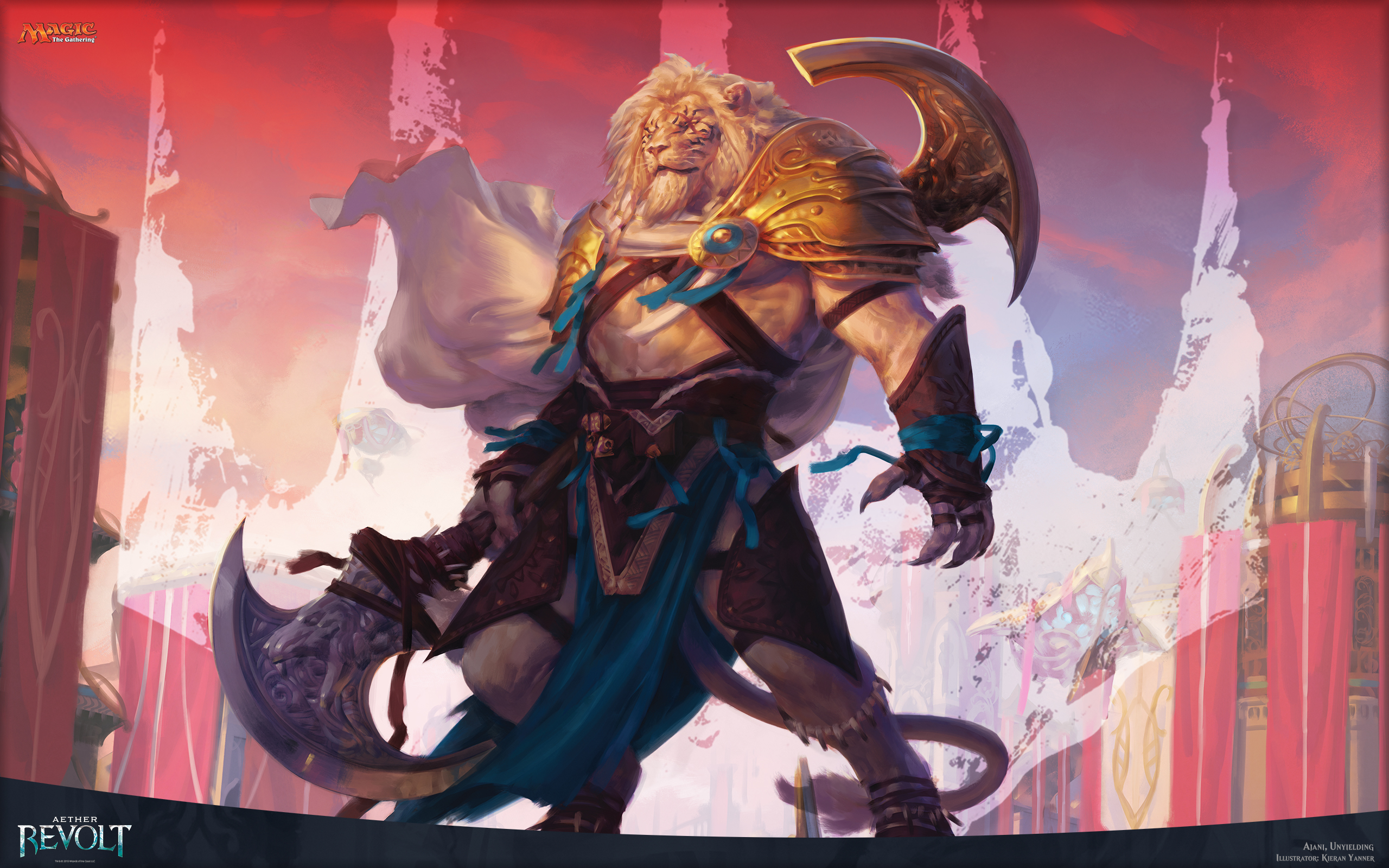


Warleader Type
Not all warlords are the same. Some may lead a small tribe, while others may rule an entire nation. Warleader type you choose reflects what kind of leader you are.
Chieftain
Even in the most uncivilized parts of the world, there are people born with a talent to lead others. These people - who call themselves Chieftains - simply take control through the sheer force of their character, eventually leading a group of dedicated people into a better future.
Contrary to the name, Chieftains don't have to command a village - often they command a small group of raiders or assault troops instead. Depending on their alignment, it can make them the saviors of the weak... or the bane of their existence.
Wild Hunt
When you choose this warleader type at 3rd level, you can use a bonus action to call the hunt. Mark one hostile creature you can see as prey, and choose a number of allied creatures within 30 feet of you equal to your proficiency bonus. If your allies can see or hear you, they can assume the role of hunters, which grants them the following benefits until the end of your next turn:
- The hunter's speed is increased by 25 feet, but it can move only towards the prey.
- The hunter's attacks against the prey score a critical hit on a roll of 19 or 20 on the d20.
- The hunter deals an extra damage equal to your Warlord modifier (minimum of +1) whenever it hits the prey with a melee weapon attack.
If the prey drops to 0 hit points before the hunt ends, you can use a bonus action on a subsequent turn of yours to call another hunt.
Once you use this feature, you must finish a short or long rest before you can use it again. Starting at 10th level, you can use this ability twice in between rests, and three times at 18th level.
Strength of the Pack
From 7th level, the hunters participating in the Wild Hunt gain a bonus depending on which of its ability score is higher - Strength or Dexterity.
Strength. When the hunter hits a creature with a melee weapon attack, it can use a bonus action to attempt to grapple or shove the target.
Dexterity. When the hunter provokes an attack of opportunity, it can add a bonus to AC equal to its Dexterity modifier against the triggering attack.
If the hunter's Strength and Dexterity scores are equal, it gains a benefit of its choice.
Follow the Alpha
Beginning at 10th level, when you hit a creature with a weapon attack, you can maneuver one of your comrades closer to the enemy. Choose an allied creature you can see within 60 feet of you. If the creature can see or hear you, it can use its reaction to move up to half its speed, but only towards your target.
Wolf Pack Tactics
At 15th level, the hunters participating in the Wild Hunt gain advantage on attack rolls against the prey if at least one of its allies is within 5 feet of the creature and the ally isn't incapacitated.
Thrill of the Hunt
Starting at 18th level, you gain 5 temporary hit points for each allied creature, other than you, that has assumed the role of a hunter using the Wild Hunt feature.



White Raven
The last White Raven died centuries ago, but there are still those who keep the memory of this noble tradition alive. These people - a new generation of White Ravens - are known for their unwavering devotion to their soldiers, a stark contrast to their almost primal ferocity on the battlefield.
White Ravens know the importance of bonds and ties between people, sometimes putting them above proper training or discipline. After all, the combined efforts of a few warriors willing to risk their lives for each other far exceed those of the same warriors working individually.
Ahead of the Flock
White Raven discipline teaches that those who seize the initiative also seize the victory. At 3rd level, you gain advantage on initiative rolls.
Seize the Initiative
Also at 3rd level, when you roll initiative, you can order one of your allies to press the advantage. Choose an allied creature within 30 feet of you. If the target can hear you, it can replace its initiative count with your current score. After that, the creature shares your initiative count, and it takes its turn before yours.
Once you use this feature, you must finish a short or long rest before you can use it again. Starting at 10th level, you can use this ability twice in between rests, and three times at 18th level.
Unwavering Devotion
You know how important your companions' lives are, and from 7th level, you'll do whatever it takes to protect them from harm. Once a creature that you can see within 5ft of you is hit with an attack roll, you can use your reaction to swap places with the creature, and you are hit by the attack instead.
White Raven Tactics
At 10th level, as a bonus action, you can direct one of your comrades to shift formation. Choose an allied creature within 30 feet of you. If the target can hear you, it can replace its initiative count with your current score. After that, the creature shares your initiative count, and it takes its turn after yours.
If the target has already acted in the current round, it can act again on its new initiative count.
You can use this feature a number of times equal to your Warlord modifier (minimum of 1). When you finish a long rest, you regain all expended uses.
Bolstering Voice
Beginning at 15th level, your voice fills your allies with courage. If a creature has temporary hit points granted by your Inspiring Word feature, it also is immune to the frightened condition.
Food for Ravens
At 18th level, when you hit a creature with a weapon attack, you can use this feature to greatly empower the strike in order to ruin the enemy's defense. You add extra 3d10 to the attack's damage roll and leave the target vulnerable to further assault.
Immediately after the attack, you can use a bonus action to call out sharp commands to your allies, spurring them to action and allowing them to take advantage of the opening. Choose up to three allied creatures within 30 feet of you, other than you. If the targets can hear you, they can make one weapon attack as a reaction against the creature you've attacked. You choose the order in which your allies’ attacks resolve.
Once you use this feature, you must finish a long rest before you can use it again.
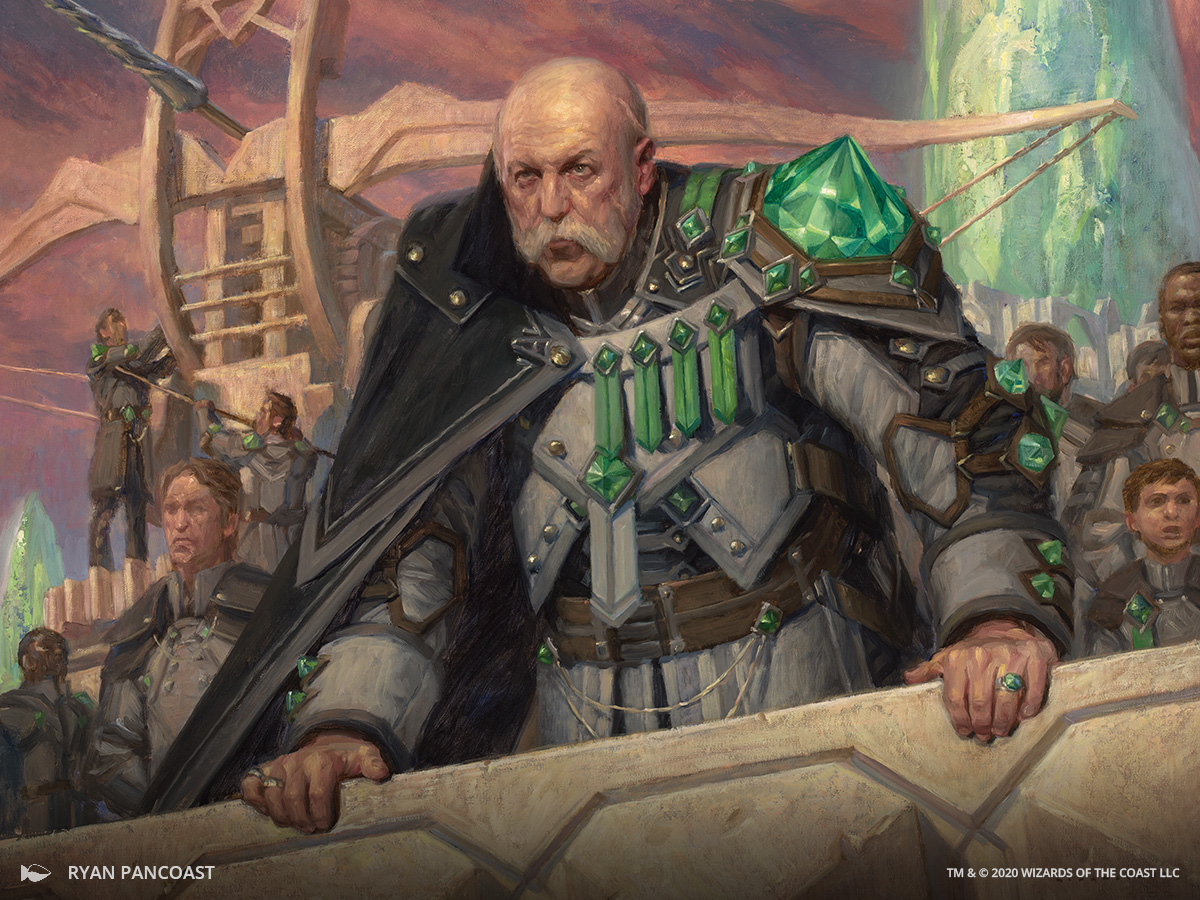

Taskmaster
"The ends justify the means" - that's the motto that almost all Taskmasters live by. Efficient and brutal, they will do almost everything to achieve set goal. Cost is always a secondary matter - after all, life of a soldier is just a resource that should be used tactically.
Though many Taskmasters are brutal just for the sake of being brutal, some of them simply see the battle a little differently than most people. They don't see the potential danger that a risky maneuver brings - they see a great opportunity that should be seized. It makes them seem cold, crude and uncaring, but... the ends justify the means, don't they?
Bonus Proficiency
When you choose this warleader type at 3rd level, you gain proficiency in the Intimidation skill. If you are already proficient in it, you gain proficiency in one of the following skills of your choice: Deception, Perception or Persuasion.
In addition, your proficiency bonus is doubled for any ability check you make that uses Intimidation.
Behest
Beginning at 3rd level, you learn how to command your allies through strict discipline and fear. You gain the following benefits:
Don't Just Stand There! As a bonus action, you can order an allied creature, other than you, within 60 feet of you to move. If that creature can see or hear you, it can use its reaction to move up to a number of feet equal to five times your Warlord modifier.
Attack! Now! When you order an allied creature to attack using your Battlefield Presence feature, that creature can move up to a number of feet equal to five times your Warlord modifier before making that attack.
Personal Safety
At 7th level, you can shield yourself from harm at the cost of your allies. When you are hit with an attack roll, you can use your reaction to swap places with a willing creature within 5 feet of you, and that creature is hit by the attack instead.
Pyrrhic Victory
Starting at 10th level, when you issue an order with your Battlefield Presence feature, the creature can make two melee weapon attacks instead of one weapon attack. When it makes a second attack, it provokes an opportunity attacks from enemies within range.
Pull Yourself Together!
At 15th level, when you rekindle the will to battle of a creature using the Undying Legion feature, you can also remind it that the battle is not over yet. If the target can hear you, it regains a number of hit points equal to your Warlord level + your Warlord ability modifier (minimum of 1).
Winner Takes All
At 18th level, your intuition and knowledge allows you to make one risky, decisive maneuver. As a bonus action, you can order your allies to press forward. Choose up to three allied creatures within 30 feet of you, other than you. If the targets can hear you, they can push the advantage as if you'd have used Battlefield Presence on them. You choose the order in which your allies’ attacks resolve.
Once you use this feature, you can't use it again until you finish a long rest.
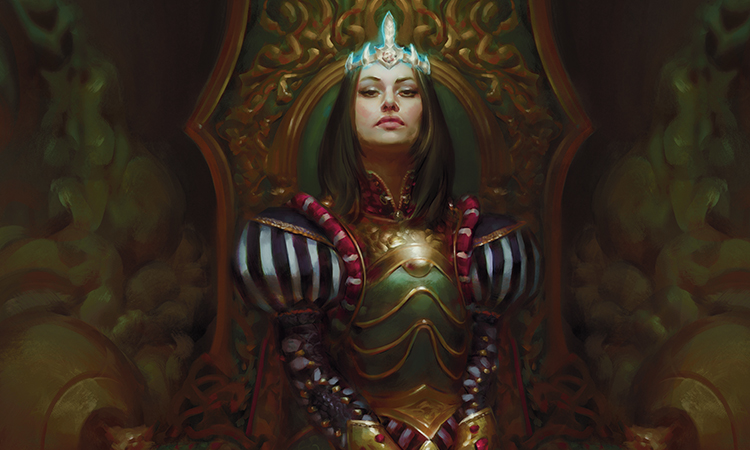


Field Physician
Should doctors, hospitals and any kind of medicine exist in a world where you can bring a person back to life with just one flick of a finger? Of course. Unlike gods, medicine is not capricious - it's reliable and doesn't require prayers or payment, only a skilled hand, hard stomach and nerves of steel.
At least that's what the Field Physicians believe in.
Field Physicians are a living proof that a mixture of knowledge, compassion and expertise can match potent healing magic of paladins, clerics or druids. They tend to the wounds of the soldiers and sometimes - in most dire of times - even fight right alongside them. After all, the best way to treat a wound is to prevent it from ever happening.
Bonus Proficiency
When you choose this warleader type at 3rd level, you gain the following benefits:
- You gain proficiency in the Medicine skill. If you are already proficient in it, you gain proficiency in one of the following skills of your choice: Nature, Sleight of Hand or Survival. In addition, your proficiency bonus is doubled for any ability check you make that uses Medicine.
- You gain proficiency with one of the following tools of your choice: herbalism kit or alchemist's supplies. In addition, during short or long rest, you can refill a number of healer's kit uses equal to your proficiency bonus, provided you have herbalism kit or alchemist's supplies in hand and you spend at least 10 minutes preparing your medications.
Combat Medic
From 3rd level, you can use a bonus action to make a Wisdom (Medicine) check, use your healer's kit to tend to a creature, or take the Help action.
Field Doctor
Also at 3rd level, you learn how to dress wounds quickly and efficiently. As an action, you can spend one use of a healer's kit to tend to a creature. That creature regains hit points equal to your Warlord level + your Warlord modifier (minimum of 1).
Once you use this feature, you must finish a short or long rest before you can use it again. Starting at 10th level, you can use this ability twice in between rests, and three times at 18th level.
Salvation
At 7th level, you know how important time is when it comes to saving someone. When an allied creature you can see or hear within 60 feet of you takes damage or makes a death saving throw, you can use your reaction to move up to your speed, but only towards that creature.
General Practitioner
At 10th level, you learn different ways to help people in need:
Rejuvenate. As an action, you can attempt to help a creature undo a debilitating effect. Make a DC 15 Wisdom (Medicine) check. On a success, you can end one condition afflicting it. The condition can be blinded, deafened, paralyzed, or poisoned.
Relieve. As an action, you can temporarily relieve the symptoms of a disease. Make a DC 15 Wisdom (Medicine) check. On a success, a creature can ignore the effects of a disease afflicting it for up to 8 hours.
Resuscitate. As an action, you can attempt to resuscitate a creature that has died within the last minute. Make a DC 15 Wisdom (Medicine) check, which automatically fails if a creature has died of old age. On a success, the creature returns to life and it becomes stable.
Reattach. You can spend 1 minute and one use of a healer's kit to reattach the severed part of the creature's body that has been cut off within the last hour.
You can use these abilities combined number of times equal to your Warlord modifier (minimum of 1). When you finish a long rest, you regain all expended uses.
Reassuring Word
Starting at 15th level, when you rekindle the will to battle of a creature using the Undying Legion feature, you can also reassure it that help is on the way. If the target can see or hear you, it gains a number of temporary hit points equal to your Warlord level + your Warlord modifier (minimum of 1).
Quick Recovery
At 18th level, you know how to clean and bind the wounds even in worst of field conditions. During short rest, you can choose up to six allied creatures, which can include you. If the target spends a Hit Die during this rest, it can forgo the roll and instead regain the maximum number of hit points the die can restore.

Mentor
Only a handful of heroes managed to achieve everything all on their own. They more often relied on the knowledge and experience of a person who took them under their wing and showed how to achieve greatness.
Mentors are not always experienced warlords - on the contrary, they usually are simple people with a specific set of combat skills that they want to pass on to their students. One of them might be a veteran of a war that took place years ago, and the other might be an old monk living in the temple hidden deep in the mountains. They share a common trait with the greatest war leaders, though - they know how to help people reach heights that lay beyond the reach of a single person.
Bonus Proficiency
When you select this warleader type at 3rd level, you gain proficiency with one type of artisan's tools of your choice.
Showing the Ropes
You know that one life is not enough to reveal all the secrets of the universe - especially life of an adventurer, which can end at any given moment. That's why at 3rd level you shift your focus towards passing the torch to a younger generation.
At the end of a long rest, you can choose a willing humanoid who can hear and understand you. That humanoid is considered your apprentice until you choose another willing humanoid at the end of your next long rest.
If your apprentice's level is equal to or lower than your Warlord level, your support and patience grants it inspiration and a number of temporary hit points equal to your Warlord level + your Warlord modifier at the end of a short or long rest.
Guiding Hand
Also starting at 3rd level, you can use the Help action to aid your apprentice as a bonus action. Additionally, when you use the Help action to aid your student in attacking a creature, the target of this attack can be anywhere, rather than 5 feet of you, if you can see the target and you stand within 5 feet of your student who can hear you.
Inspiration?
The inspiration mechanics are detailed in the Player's Handbook (p.125)
If your DM uses inspiration as a reward, you can freely separate DM's and Mentor's inspiration as two different mechanics.
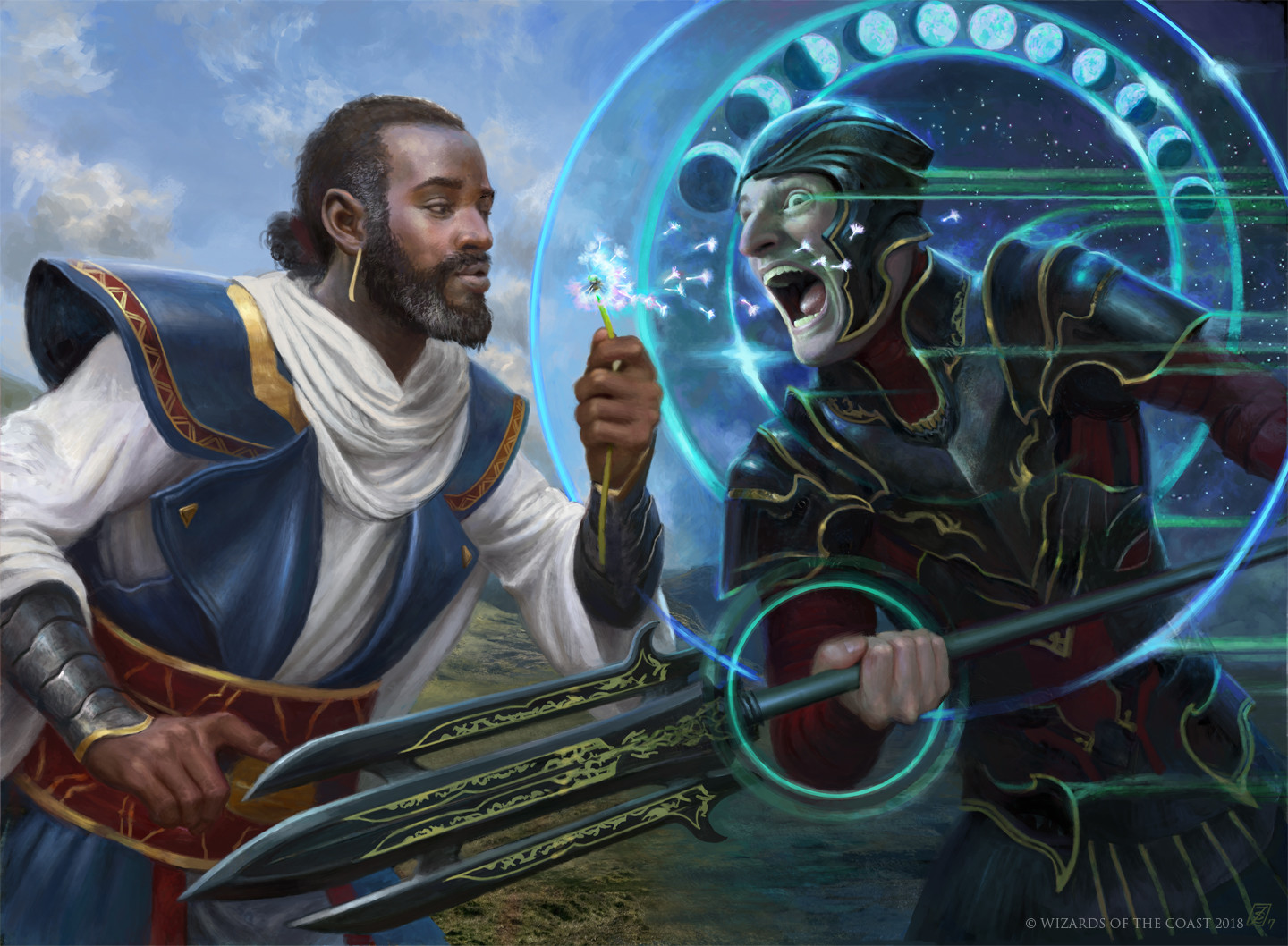


Adjust Your Stance!
Starting at 7th level, when your apprentice who can hear you rolls 1 on the d20 for an attack roll, it can reroll the die and must use the new roll.
Proud Teacher
Also at 7th level, you receive inspiration whenever your apprentice that you can see rolls 20 on the d20 for an attack roll.
Master's Encouragement
Beginning at 10th level, when your apprentice hits a creature with an attack, you can give it a small gesture of approval. If your student is within 30 feet of you and can see or hear you, it gains a number of temporary hit points equal to your Warlord level + your Warlord modifier.
Alternatively, when your apprentice misses a creature with an attack, you can encourage it to try a little harder. If your student is within 30 feet of you and can see or hear you, it receives an inspiration.
You can use this feature a number of times equal to your Warlord modifier (minimum of 1). When you finish a long rest, you regain all expended uses.
Accomplished Storyteller
At 15th level, you can cast the Legend Lore spell without expending a spell slot, as long as at least one person listens to your story.
Last Stand
At 18th level, devotion to your apprentice lets you ignore even deadliest of wounds. When you are reduced to 0 hit points, but not killed outright, you can refuse to drop unconscious and keep on fighting while having 0 hit points instead as long as you can see or hear your apprentice. While you have 0 hit points, taking damage causes death saving throw failures as normal, and three death saving throw failures can still kill you. On your third success, you fall unconscious if you still have 0 hit points.
Once you use this feature, you can’t use it again until you finish a long rest.
Variant: Heroic Death
When you save your apprentice using Last Stand feature, but die in the process, roll a d20. If you roll 1, you die heroically, and you can't be brought back by any form of resurrection spell, as your soul is not willing to come back after you've fulfilled your purpose in life. You can choose to fail that roll.


Arcane Commander
Arcane Commanders combine the tactical abilities common to all warlords with magical techniques similar to those used by Eldritch Knights. They most often utilize abjuration and transmutation magic that protects allies and bends the battlefield to their will, although it is not unusual that they use spells of the evocation and divination schools to shift the course of a battle.
On their own right, Arcane Commanders are dangerous masters of sword and magic. However, with a powerful mage at their side, they become a true force to be reckoned with.
| Warlord Level | Cantrips Known | Spells Known | 1st | 2nd | 3rd | 4th |
|---|---|---|---|---|---|---|
| 3rd | 2 | 3 | 2 | — | — | — |
| 4th | 2 | 4 | 3 | — | — | — |
| 5th | 2 | 4 | 3 | — | — | — |
| 6th | 2 | 4 | 3 | — | — | — |
| 7th | 2 | 5 | 4 | 2 | — | — |
| 8th | 2 | 6 | 4 | 2 | — | — |
| 9th | 2 | 6 | 4 | 2 | — | — |
| 10th | 3 | 7 | 4 | 3 | — | — |
| 11th | 3 | 8 | 4 | 3 | — | — |
| 12th | 3 | 8 | 4 | 3 | — | — |
| 13th | 3 | 9 | 4 | 3 | 2 | — |
| 14th | 3 | 10 | 4 | 3 | 2 | — |
| 15th | 3 | 10 | 4 | 3 | 2 | — |
| 16th | 3 | 11 | 4 | 3 | 3 | — |
| 17th | 3 | 11 | 4 | 3 | 3 | — |
| 18th | 3 | 11 | 4 | 3 | 3 | — |
| 19th | 3 | 12 | 4 | 3 | 3 | 1 |
| 20th | 3 | 13 | 4 | 3 | 3 | 1 |
Spellcasting
When you choose this warleader type at 3rd level, you augment your tactical prowess with the ability to cast spells.
Cantrips
You learn two cantrips of your choice from the wizard spell list. You learn an additional wizard cantrip of your choice at 10th level.
Spell Slots
The Arcane Commander Spellcasting table shows how many spell slots you have to cast your spells of 1st level and higher. To cast one of these spells, you must expend a slot of the spell's level or higher. You regain all expended spell slots when you finish a long rest.
For example, if you know the 1st-level spell Jump and have a 1st-level and a 2nd-level spell slot available, you can cast Jump using either slot.
Spells Known of 1st Level and Higher
You know three 1st-level wizard spell of your choice, one from any school of magic, and two chosen from the abjuration and transmutation spells on the wizard spell list.
The Spells Known column of the Arcane Commander Spellcasting table shows when you learn more wizard spells of 1st level or higher. Each of these spells must be an abjuration or transmutation spell of your choice, and must be of a level for which you have spell slots. For instance, when you reach 7th level in this class, you can learn one new spell of 1st or 2nd level.
The spells you learn at 8th, 14th, and 20th level can come from any school of magic.
Whenever you gain a level in this class, you can replace one of the wizard spells you know with another spell of your choice from the wizard spell list. The new spell must be of a level for which you have spell slots, and it must be an abjuration or transmutation spell, unless you're replacing the spell you gained at 3rd, 8th, 14th, or 20th level from any school of magic.


Spellcasting Ability
Intelligence is your spellcasting ability for your wizard spells, since you learn your spells through study and memorization. You use your Intelligence whenever a spell refers to your spellcasting ability. In addition, you use your Intelligence modifier when setting the saving throw DC for a wizard spell you cast and when making an attack roll with one.
Spell save DC = 8 + your proficiency bonus + your Intelligence modifier
Spell attack modifier = your proficiency bonus + your Intelligence modifier
Arcane Assault
Starting at 3rd level, you have acquired enough knowledge to lead a full-on arcane assault. You gain the following benefits:
War Magic. You can use Battlefield Presence feature when an allied creature deals damage to a creature with a cantrip or a spell that requires an attack roll.
Arcane Presence. When you issue an order with your Battlefield Presence feature, the creature can cast a cantrip it knows instead of making a weapon attack, provided the cantrip's casting time is 1 action and it targets only one enemy.
Eldritch Warlord
Beginning at 7th level, when you take the Attack action on your turn, you can forgo one of your attacks and cast a cantrip in its place.
Transmuting Strike
At 10th level, you gain the ability to infuse your weapon strikes with transmutation magic. Once on each of your turns when you hit an enemy with a weapon attack, you can choose acid, cold, fire, lightning or thunder. That enemy loses resistance to the chosen damage type until the start of your next turn.
Glyph of Inspiration
Starting at 15th level, you learn how to protect your allies from harm using powerful glyphs. If a creature has temporary hit points granted by your Inspiring Word feature, it also has resistance to one damage type of your choice: acid, cold, fire, lightning or thunder.
Improved Eldritch Warlord
At 18th level, when you take the Attack action on your turn, you can forgo one of your attacks and cast a spell of 1st level or higher in its place.
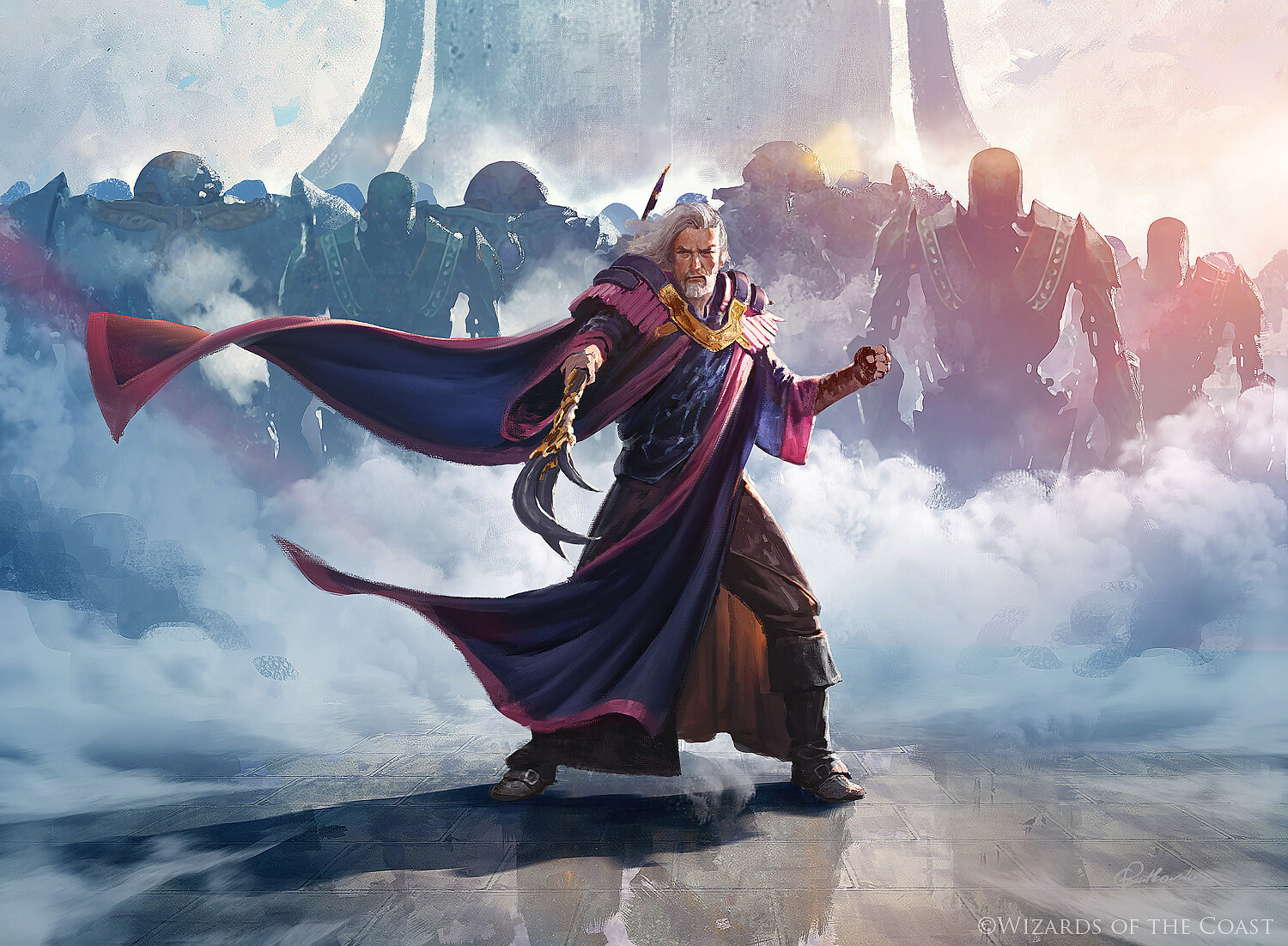


Shadow Marshal
Not all heroic warriors walk in the light. Shadow Marshals, for example, prefer to hide in the darkness from which they draw their power... and from which they tend to manipulate the course of the action.
Shadow Marshals tend to keep their hands clean ... in theory, at least. They just don't hold a blade that cuts their enemies. Instead, they use their own shadow - a twisted and evil creature stained with the darkness of Shadowfell - who willingly obeys their orders ... as long as it has the opportunity to feed on the life force of a living being.
Living Shadow
The darkness that lies within you has stained your shadow, changing it into a foul beast that consumes vitality of living creatures. It's completely passive towards you, your allies or enemies, and it remains hidden within the shadows... until you feed it.
At 3rd level, you learn how to cooperate with the beast that hides behind you... To a degree. The shadow's strength is represented by your Shadowfell die, which is a d6. It measures both the cost of the power you can use and the influence the shadow currently has on the Material Plane.
Some of your powers require you to pay a tribute to your shadow. When you do so, roll the Shadowfell dice and take necrotic damage equal to the amount rolled. This damage can't be reduced in any way.
When you reach certain levels in this class, the size of your Shadowfell die increases: at 5th level (d8), 11th level (d10), and 17th level (d12).
Dance of Two Shadows. As a bonus action, you can forfeit some of your vitality to awaken the shadow. Pay a tribute of one Shadowfell die. For the next 10 minutes, the shadow lurks nearby, awaiting your commands. It vanishes early if you are incapacitated or die.
While the shadow is awakened, you gain the following benefits:
- You can use your Charisma modifier instead of your Strength modifier for the Strength checks and saving throws, as well as any attack and damage roll that uses Strength or Dexterity.
- You can use the shadow to make weapon attacks. These attacks use the properties of the weapon you're holding, but they use a d6 in place of the normal damage, and their damage type is psychic. The damage changes as you gain level in this class, as shown in the section above.
- You can use Battlefield Presence on your shadow as if it was one of your companions, but it consumes your bonus action to make this attack.
Shade Sight. As an action, you can pay a tribute to gain access to an enhanced vision of your "companion". You can choose how much Shadowfell dice you're willing to roll, but the number can't be higher than your Charisma modifier. For a number of hours equal to the amount of Shadowfell dice you rolled, you have darkvision out to a range of 120 feet.
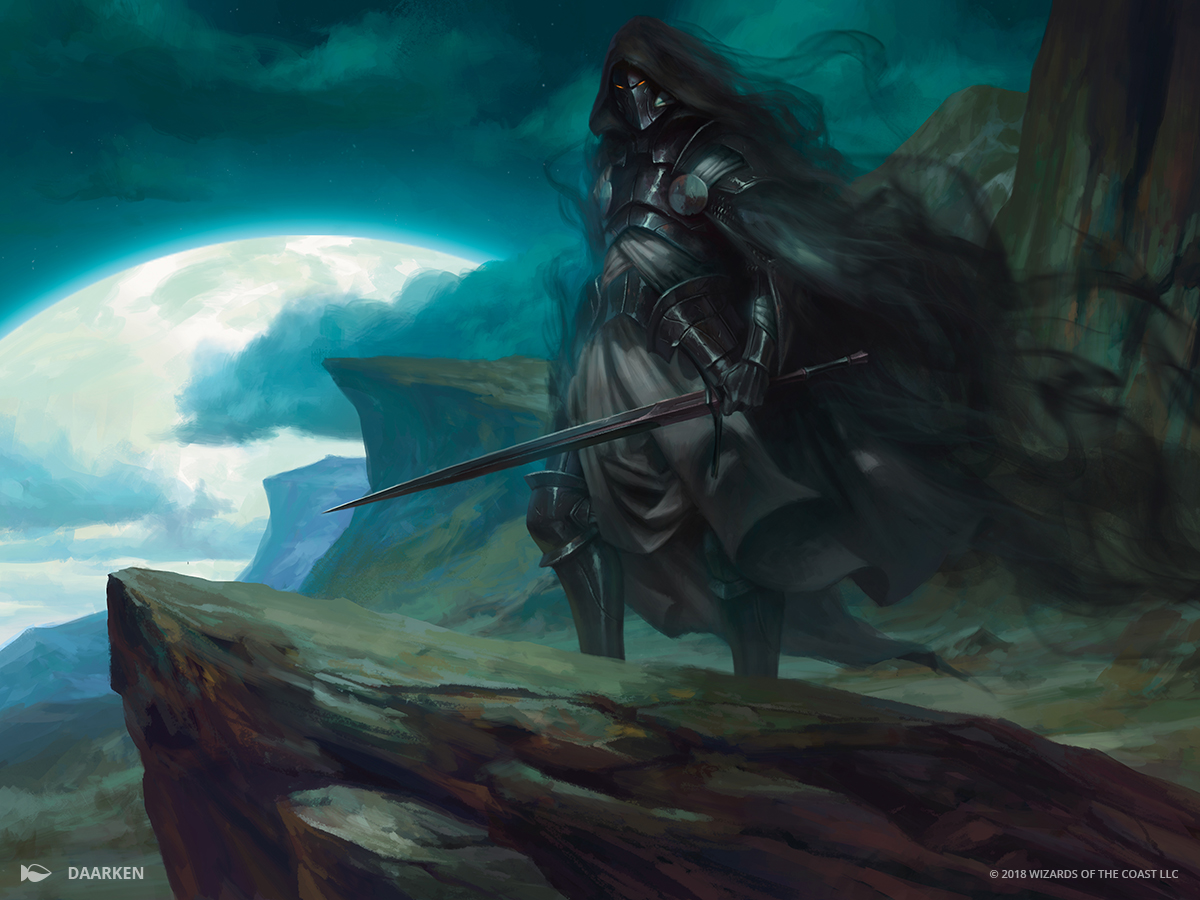

Shadow Mantle. You can pay a tribute of one Shadowfell die to take the Hide action as a bonus action on your turn.
Shadow Pact
Starting at 7th level, the connection between you and your shadow deepens. As worrying as this is, it does provide some additional abilities detailed below.
Shadow Rend. When you use Dance of Two Shadows, you can, as a reaction, make one weapon attack with the shadow.
Ethereal Awareness. When you use Shade Sight, you also see into the Ethereal Plane within 120 feet of you.
Dark Creature. When you use Shadow Mantle, you can attempt to hide even when you are only lightly obscured by dim light.
Shadow Surge
At 10th level, you gain the ability to step into the shadows of your allies. As a bonus action, you can teleport up to 60 feet to an unoccupied space you can see within 5 feet of a friendly creature.
Once you use this feature, you can't do so again until you finish a long rest, unless you pay a tribute of one Shadowfell die to use this feature again.
Veil of Shadows
At 15th level, you learn how to protect your allies using the lingering darkness of Shadowfell. If a creature has temporary hit points granted by your Inspiring Word feature, it also has resistance to bludgeoning, piercing, and slashing damage from nonmagical weapons.
Underworld Gambit
From 18th level, as an action, you can pay a tribute to temporarily merge with your shadow. You can choose how much Shadowfell dice you're willing to roll, but the number can't be higher than your Charisma modifier. In the form of a shade, you strike up to three creatures you can see within 60 feet of you. Make a weapon attack against each target. If that attack hits, you can roll the spent Shadowfell dice and add the value rolled to the attack's damage roll.
You can then teleport to an unoccupied space you can see within 5 feet of one of the targets you hit or missed.
Once you use this feature, you must finish a long rest before you can use it again.


Controller
Awake to the psionic power within, a Controller is a warlord whose fighting style incorporates telepathic lashes, manipulation and plain domination of an opponent. They are usually frown upon, as their powers are viewed as immoral and unhonorable, but from time to time - mostly in militaristic cultures of githyanki - their ability to control the enemy forces is portrayed as the greatest gift of all.
No matter how the Controllers are perceived by their comrades, they are one of the best assets of the Psi Warriors forces throughout the Multiverse.
Psionic Power
At 3rd level, you harbor a wellspring of psionic energy within yourself. This energy is represented by your Psionic Energy dice, which are each a d6. You have a number of these dice equal to twice your proficiency bonus, and they fuel various psionic powers you have, which are detailed below.
Some of your powers expend the Psionic Energy die they use, as specified in a power's description, and you can't use a power if it requires you to use a die when your dice are all expended. You regain all your expended Psionic Energy dice when you finish a long rest. In addition, as a bonus action, you can regain one expended Psionic Energy die, but you can't do so again until you finish a short or long rest.
When you reach certain levels in this class, the size of your Psionic Energy dice increases: at 5th level (d8), 11th level (d10), and 17th level (d12).
The powers below use your Psionic Energy dice. Some of those powers require your target to make a saving throw to resist the power's effects. The saving throw DC is calculated as follows:
Power save DC = 8 + your proficiency bonus + your Intelligence modifier
Telepathic Manipulation. As a bonus action, you can try to access a creature's mind. Choose one humanoid that you can see within 60 feet of you. That target must make a Wisdom saving throw. On a failed save, that creature can’t take a reaction by itself for 1 minute, or until you lose your concentration (as if you were concentrating on a spell). While the effect is active, you have a telepathic link with the target as long as the two of you are on the same plane of existence, and you can use Battlefield Presence to force it to attack a creature of your choice that you can see.
Each time the target takes damage, it makes a new Wisdom saving throw against the effect. If the saving throw succeeds, the effect ends.
Once you take this bonus action, you can't do so again until you finish a long rest, unless you expend a Psionic Energy die to take it again.

Shattered Psyche. As an action, you can expend a number of Psionic Energy dice (up to your proficiency bonus) to ruin the psyche of one creature you can see within 60 feet of you. The target must make an Intelligence saving throw or take psychic damage equal to Psionic Energy dice roll + your Intelligence modifier per dice spent.
Telepathic Link. As an action, you can establish telepathic communication between yourself and your troops. Choose one or more creatures you can see, up to a number of creatures equal to your proficiency bonus, and then roll one Psionic Energy die. For a number of hours equal to the number rolled, the chosen creatures can speak telepathically with you, and you can speak telepathically with them. To send or receive a message (no action required), you and the other creature must be within 1 mile of each other. A creature can't use this telepathy if it can't speak any languages, and a creature can end the telepathic connection at any time (no action required). You and the creature don't need to speak a common language to understand each other.
Once you take this action, you can't do so again until you finish a long rest, unless you expend a Psionic Energy die to take it again.
Telepathic Adept
At 7th level, your telepathic powers grow stronger, granting you additional abilities detailed below.
Telepathic Command. You can cast the Command spell, requiring no components, and your spellcasting ability for the spell is Intelligence.
Once you cast the spell with this feature, you can't do so again until you finish a long rest, unless you expend a Psionic Energy die to cast it again.
Thought Control. When a creature fails its Wisdom saving throw against your Telepathic Manipulation, it also is charmed by you for the duration. The charmed creature's attitude toward you doesn't change, but you can manipulate how it perceives your person, making you appear more trustworthy or intimidating.
Fortress of the Mind
By 10th level, you've learned to resist any attempts to penetrate your mind. You gain proficiency in Wisdom saving throws.
Lingering Power
At 15th level, when you expend the Psionic Energy die to use a feature or spell that forces the target to make a Wisdom saving throw, you can roll that Psionic Energy die and add half the number rolled (rounded up) to your saving throw DC.
Telepathic Master
By 18th level, your psionic powers have grown enough for you to take full control of the creature. You can cast the Dominate Person spell, requiring no components, and your spellcasting ability for the spell is Intelligence. When you take total and precise control of your target, you can also make one attack with a weapon as a bonus action.
Once you cast the spell with this feature, you can't do so again until you finish a long rest, unless you expend a Psionic Energy die to cast it again.


Revenant
Souls that have met a cruel and undeserved end can sometimes come back to the world of the living as beings thirsty for revenge against those who wronged them in life. These beings - known also as Revenants - are usually driven only by anger, which deprives them of all the qualities they once possessed...
However, it's not always the case.
From time to time, a soul binds itself to a person of great importance - a loved one, a sibling, even a companion. These people can act as a remedy for negative emotions that anchor the spirit to the Material Plane... unless, of course, they aren't swallowed up by the flame of vengeance that burns deep within the Revenant's soul.
Ghost Legionnaire
Your bond with one of your fallen comrades has surpassed death itself. When you choose this warleader type at 3rd level, you gain a faithful companion, a ghost legionnaire. It's friendly to you and your companions, and it obeys your commands. See its game statistics in the Ghost Legionnaire stat block, which uses your proficiency bonus (PB) in several places. You determine the creature's appearance and if it communicates directly, or if it's a silent ally that answers whenever needed. If you choose silent option, the legionnaire gains Message cantrip, which it can cast at your will without spending any components.
When you roll initiative, choose a weapon: Spear and Shield, Longsword or Shortbow. The creature equips a spectral version of that weapon and uses it in the fight. The legionnaire can swap its weapon during the fight, but must use an action to do so.
In combat, the legionnaire shares your initiative count, but it takes its turn immediately after yours. It can move and use its reaction on its own, but the only action it takes on its turn is the Dodge action, unless you use a bonus action on your turn to command it to take another action. That action can be one in its stat block or some other action. If you are incapacitated, the legionnaire can take any action of its choice, not just Dodge.
The legionnaire remains by your side until it is reduced to 0 hit points or until you die.
When the legionnaire dies, you can summon it back to the Material Plane at the end of a long rest. In addition, you can use your action to recall it at any time, but you must expend one use of the Inspiring Word feature to do so. Regardless of how the legionnaire was brought back to the Material Plane, it reappears after 1 minute with all its hit points restored.
Incorporeal Movement
From 7th level, the legionnaire can move through other creatures and objects as if they were difficult terrain. It takes 1d10 force damage if it ends its turn inside an object.
Army of Two
At 10th level, you and your spectral comrade became a real army of two. When you issue an order with your Battlefield Presence feature, the legionnaire can make two weapon attacks instead of one.


Ghost Legionnaire
Small or medium undead
- Armor Class 14 (or 16 [Spear/Shield Only])
- Hit Points your Charisma modifier + five times your Warlord level (the legionnaire has a number of hit dice [d8s] equal to your Warlord level)
- Speed 30 ft.
STR DEX CON INT WIS CHA 7 (-2) 13 (+1) 10 (0) 10 (0) 12 (+1) 17 (+3)
- Saving Throws: Str -2 plus PB, Con +0 plus PB
- Skills: Stealth +1 plus PB x 2, Perception +1 plus PB
- Damage Immunities: necrotic, poison
- Condition Immunities: exhaustion, grappled, poisoned
- Senses: darkvision 60 ft., passive Perception 10 + (PB)
- Languages: understands the languages you speak
- Proficiency Bonus (PB): equals your bonus
Soulbound. The legionnaire takes 1d10 force damage if it ends its turn in the Ethereal Plane. It doesn't take that damage if it stays within 30 feet of a creature it is bound to.
Incorporeal Movement (7th level). The legionnaire can move through other creatures and objects as if they were difficult terrain. It takes 1d10 force damage if it ends its turn inside an object.
Actions
Spear (Spear/Shield Only). Melee Weapon Attack: your Charisma modifier + PB to hit, reach 5 ft., one target you can see. Hit: 1d6 + PB force damage.
Longsword (Longsword Only). Melee Weapon Attack: your Charisma modifier + PB to hit, reach 5 ft., one target you can see. Hit: 1d10 + PB force damage.
Shortbow (Shortbow Only). Ranged Weapon Attack: your Charisma modifier + PB to hit, reach 80/320 ft., one target you can see. Hit: 1d6 + PB force damage.
Etherealness. The legionnaire enters the Ethereal Plane from the Material Plane, or vice versa. While in the Ethereal Plane, it can see and hear the Material Plane, but it can't see anything more than 60 feet away. It can only affect and be affected by other creatures on the Ethereal Plane. Creatures that aren't there can't perceive the legionnaire or interact with it, unless they have the ability to do so.
Reactions
Vigilant Spirit. At the start of a combat, the legionnaire can reappear in the Material Plane if it was in the Ethereal Plane.
Possession
At 15th level, your spectral companion's influence on the living world becomes strong enough for it to attempt to possess a humanoid creature.
As an action, the legionnaire can force one humanoid within 5 feet to make a Charisma saving throw (DC equal to 8 + your proficiency bonus + your Charisma modifier). On a failed save, that creature is possessed by the legionnaire; the ghost then disappears, and the target is incapacitated and loses control of its body. The legionnaire now controls the body but doesn't deprive the target of awareness. The ghost can't be targeted by any attack, spell, or other effect, except ones that turn undead, and it retains its alignment, Intelligence, Wisdom and Charisma. It otherwise uses the possessed target's statistics, but doesn't gain access to the target's knowledge, class features, or proficiencies other than those with weapons and armor.
While possessing a humanoid, the legionnaire can take any action of its choice, not just Dodge. It also has access to its spectral weapons, which can be swapped as an action.
The possession ends when the body drops to 0 hit points, the legionnaire ends it as an action, or the ghost is turned or forced out by an effect like the dispel evil and good spell. When the possession ends, the legionnaire reappears in an unoccupied space within 5 feet of the body. The target is immune to the ghost's Possession for 1d4 days after succeeding on the saving throw or after the possession ends.
A humanoid whose challenge rating is equal to or greater than your warlord level can't be possessed by the legionnaire.
Once you command the legionnaire to use this feature, it must finish a long rest before it can use it again.
Stolen Life
From 18th level, the legionnaire can force possessed humanoid to roll a death saving throw at the start of each of its turns. On a third failure, the creature's soul is repelled from the body, and the creature dies. The legionnaire then takes over the body, becoming its new natural host. While in the body, it can't be turned or forced out by any magical means, short of a Wish spell. It can also freely enter and leave the body as an action.
If the creature has three successful saves, its soul can't be repelled from the body, even if the ghost possesses it again.

The Warlord
By zaelos_3
Art Credits:
Cover: Wesley Burt - Oath of Gideon
Preview: Cynthia Sheppard - Ampryn Tactician
Page 1: Copyright: ©Wizards of the Coast LLC.
Page 1 (City): Grzegorz Rutkowski - Watchful Giant
Page 2: Grzegorz Rutkowski - Aryel Knight
Page 4: Kieran Yanner - Ajani Unyielding
Page 5: Wesley Burt - Surrak, the Hunt Caller
Page 6: Ryan Pancoast - General Kudro
Page 7: Kieran Yanner - Queen Marchesa
Page 8: Bram Sels - Valiant Rescuer
Page 9: Zach Stella - Temporal Machinations
Page 10: Scott Murphy - Inspiring Veteran
Page 11: Ben Wootten - White Raven
Page 12: Grzegorz Rutkowski - Urza, Lord High Artificer
Page 13: Mike "Daarken" Lim - Ihsan's Shade
Page 14: Rovina Kai - Parasitic Grasp
Page 15: Magali Villeneuve - Maddening Cacophony
Page 16: Tyler Jacobson - Threads of Disloyalty
Page 17: Ryan Yee - Forbidding Spirit
Page 19: Mike "Daarken" Lim - Gideon, Martial Paragon
Page Textures: /u/flamableconcrete
Created Using: GMBinder
Special Thanks: /u/weird_dm